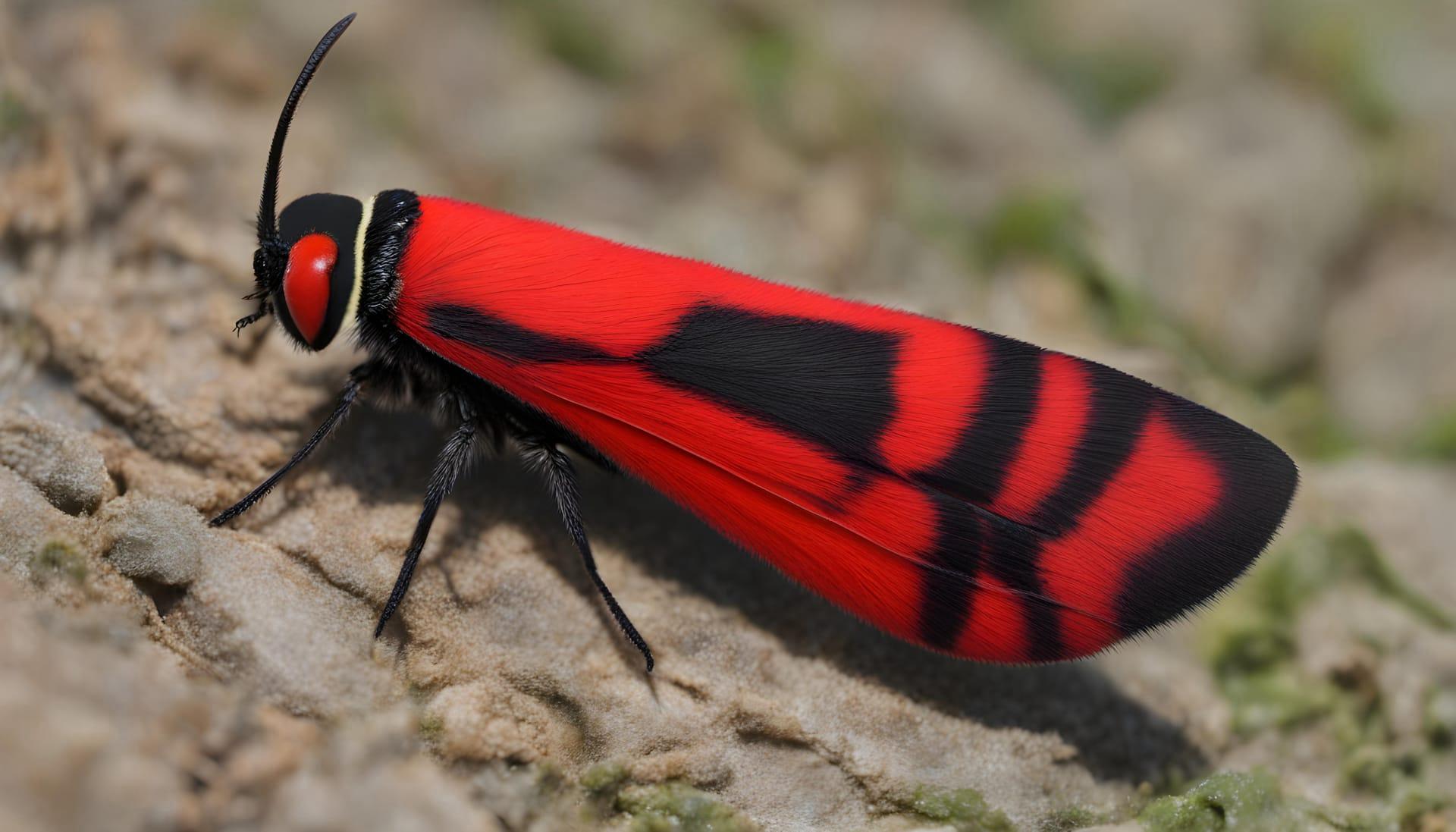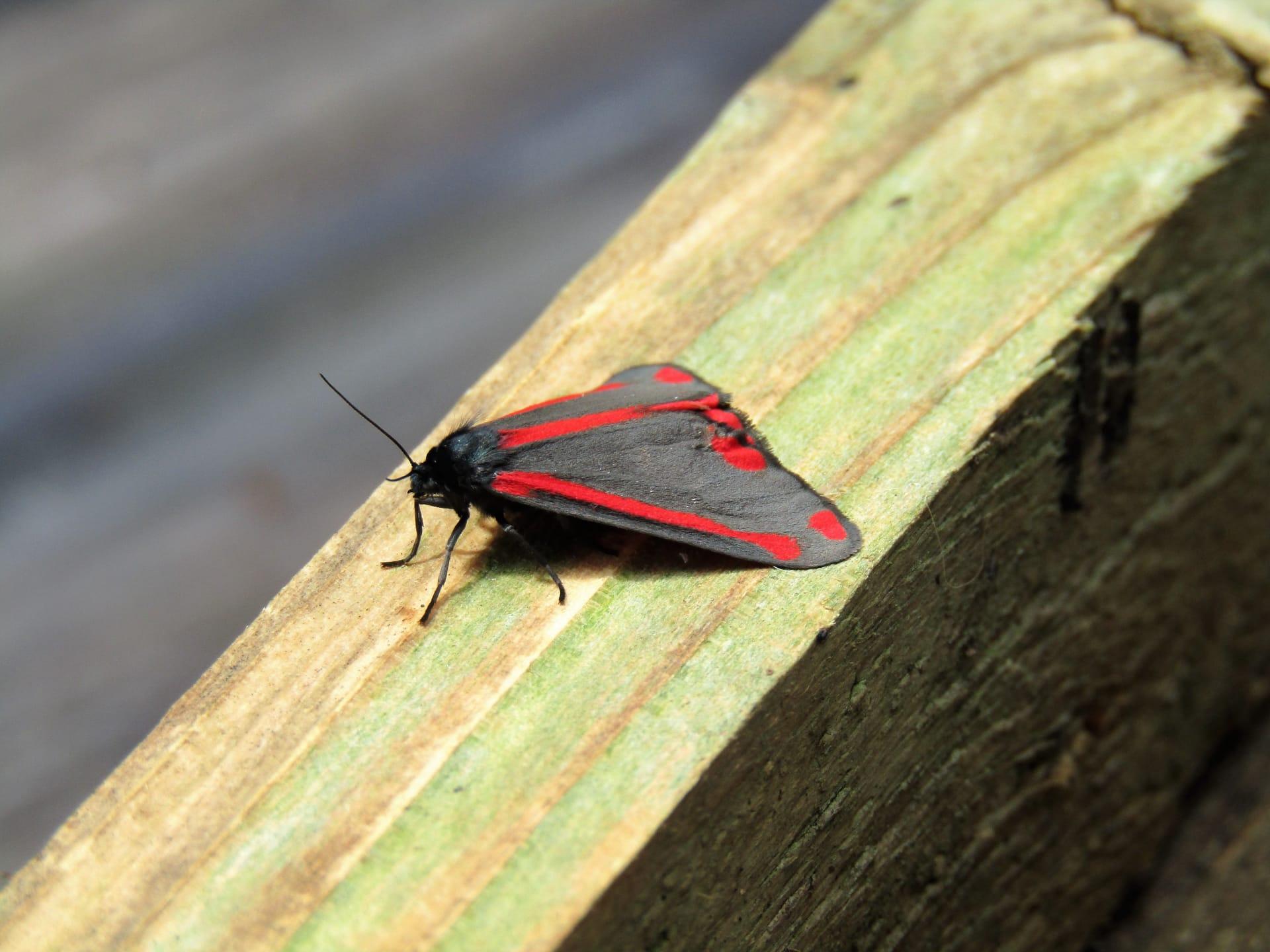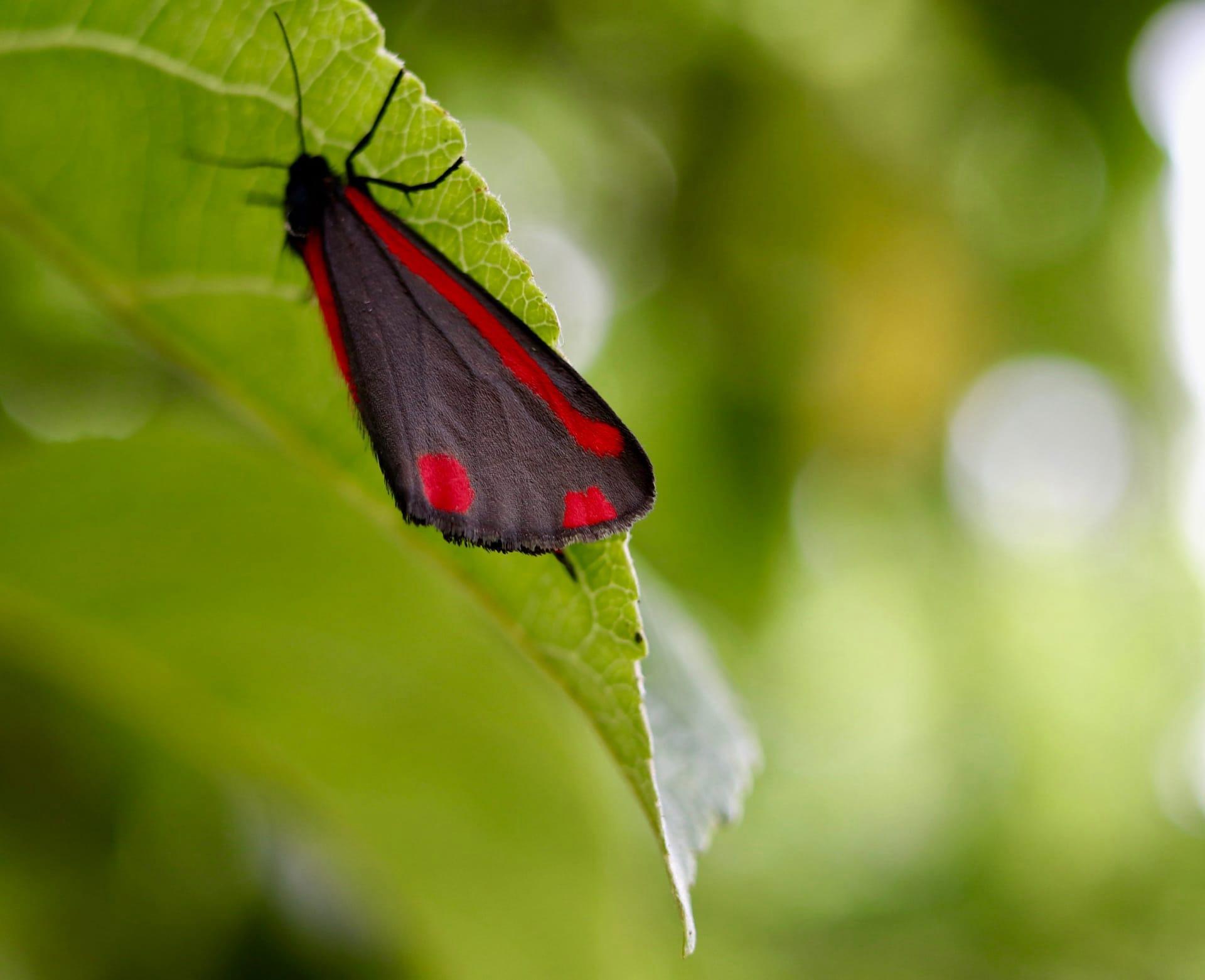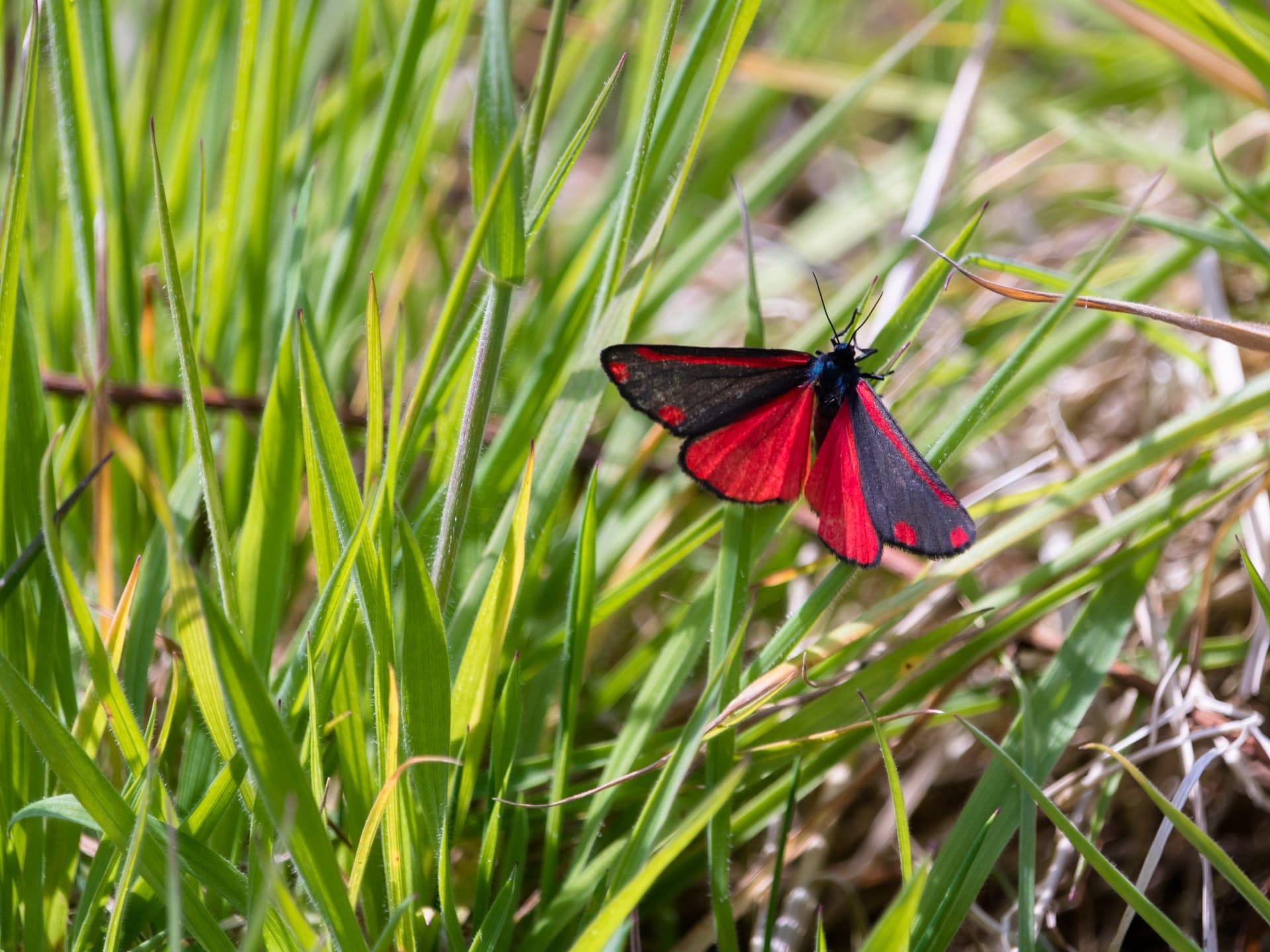Cinnabar Moth Trivia
- Home /
- Trivia Question /
- Animal /
- Cinnabar Moth Trivia
1
Question: What distinctive colors make the Cinnabar Moth easily recognizable?
Answer: The Cinnabar Moth sports a striking color scheme. Its wings are a vibrant, deep red, with a distinctive jet-black border and spots. This bold coloration is a classic example of aposematism, a tactic used by many species to warn predators of their toxicity.
Question: How long does the Cinnabar Moth typically live once it reaches adulthood?
Answer: The lifespan of an adult Cinnabar Moth is quite brief, usually lasting only 1 to 2 weeks. This short life span is typical for many moth species. During this time, their main focus is on mating and laying eggs for the next generation.

2
Question: Is it true that Cinnabar Moths are poisonous throughout their life cycle?
Answer: Yes, Cinnabar Moths are indeed toxic at all stages of their life cycle. They acquire their toxicity by feeding on ragwort plants as caterpillars, which contain alkaloids poisonous to many predators. This toxicity remains with them into adulthood.
Question: Do Cinnabar Moths contribute to the spread of the ragwort plant, which is considered a weed in many areas?
Answer: Contrary to some beliefs, Cinnabar Moths don't spread ragwort. In fact, their caterpillars feed on these plants, helping control their population. However, since the caterpillars don't consume enough of the plant to eradicate it, their impact is more suppressive than eliminative.

3
Question: How do Cinnabar Moth caterpillars contribute to their own survival in terms of appearance?
Answer: Cinnabar Moth caterpillars have a unique survival strategy. They are brightly colored in yellow and black stripes, making them highly visible. This coloration, like in the adults, is a warning sign to predators about their toxicity, which they gain from their diet of ragwort.
Question: What is the primary diet of Cinnabar Moth caterpillars, and how does it affect them?
Answer: The primary diet of Cinnabar Moth caterpillars is the leaves of the ragwort plant. This diet is crucial as it makes them toxic to predators. The alkaloids from the ragwort accumulate in their bodies, providing a chemical defense against being eaten.

4
Question: How does the mating behavior of Cinnabar Moths occur?
Answer: The mating ritual of Cinnabar Moths is a nocturnal activity. Males, attracted by the pheromones released by females, fly at night to find a mate. After mating, the female lays her fertilized eggs, typically on the underside of ragwort leaves.
Question: Where are Cinnabar Moths most commonly found, and what is their preferred habitat?
Answer: Cinnabar Moths are most commonly found in Europe and Asia. They prefer open habitats like meadows, gardens, and wastelands. These areas are often abundant in ragwort, providing a food source for their caterpillars.

5
Question: How do temperature and climate affect the development of Cinnabar Moth caterpillars?
Answer: Temperature and climate have a significant impact on the development of Cinnabar Moth caterpillars. Warmer temperatures generally accelerate their growth, leading to faster metamorphosis into moths. However, extreme heat or cold can be detrimental to their development.
Question: What role do Cinnabar Moths play in the ecosystem?
Answer: Cinnabar Moths play a vital role in controlling the population of ragwort, a toxic plant. While they don’t eliminate these plants, they help manage their spread. Additionally, as a part of the food chain, they serve as prey for some species, contributing to biodiversity.